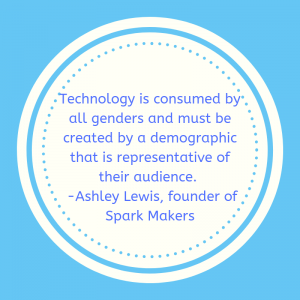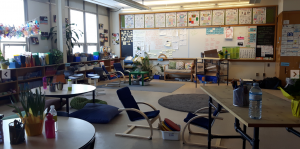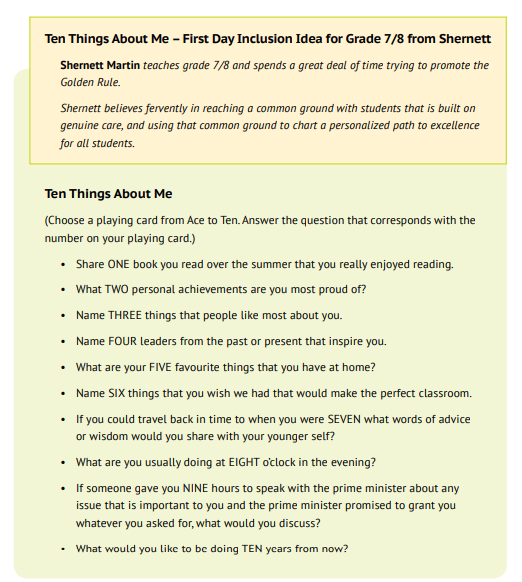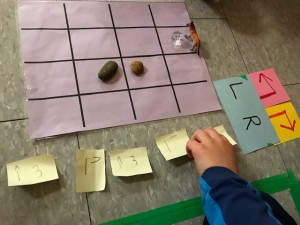The Courage to Teach

In this very challenging time of education cutbacks, teachers are on the edge. They wonder how long they will keep their jobs and what will classrooms be like in the next school year.
Losing your job as a teacher is not just about losing a job, it is about losing the work that you do to challenge your spirit to make a difference – it is about losing your heart. When teachers teach, they teach through resources no other person possesses, their identity as a teacher and as a learner and as an adult who cares about students. As a teacher of over 19 years, I know that students can tell the difference between teachers who care and teachers who do not care – and this impacts how students learn.
Parker Palmer (2007, p. 11) puts it simply “Good teaching cannot be reduced to technique; good teaching comes from the identity and integrity of the teacher.”
When teachers teach, they are connected to the students, dialed into who the students are and what interests them. Good teachers are always looking for the teachable moment to grab students’ interest and get them excited about learning. “Good teachers possess a capacity for connectiveness. They are able to weave a complex web of connections among themselves, their subjects, and their students so that students can learn to weave a world for themselves” (Palmer, 2007, p. 11). Methods vary depending on the grade level, subject, and opportunity – lectures, Socratic dialogues of questions and answers, experiments, collaborative problem solving, or one on one discussions. It’s all good teaching when connections are made through “the place where intellect and emotion and spirit and will converge in the human self” (Palmer, 2007, p. 11), the heart of a person, a student.
As a teacher I do my best to keep my heart of teaching strong and pliable. I have learned to roll with the challenges of teaching through dealing with challenging students, challenging parents, and sometimes challenging administrators. It is not an easy job to keep heart.
Why do teachers lose heart?
In the daily “work out” of teaching, we are highly vulnerable as we are the centre of attention in the classroom. This is a highly personal job. Students are watching us for who we are and what we represent. Our public and private lives are on the line in classrooms. We must be ourselves but we also must have a suit of self-protection against high levels of criticism that are meant to break us. Teachers will ultimately make mistakes in their teaching, in their assessment, and sometimes in their judgement but I find that students are usually very forgiving, especially if the teacher owns the mistake.
Another reason why teachers lose heart is that teaching can be very challenging. What makes teaching really hard is in seeing the potential of students and identifying the great barriers students face in fulfilling their best self. The challenge is to face with the barriers that limit students’ potential. Human potential gets sidetracked by disability, culture, identity, family, school culture, community, and economics. In having high expectations for all students, teachers make a grand difference in the students’ future. Teaching students how to get around these barriers is key to their social, emotional, and academic growth. When using intuition and identity, teachers discover ways to reach students’ hearts.
To become a really good teacher, it took me over 8 years of practice. That’s about 10,000 hours – Malcolm Gladwell’s 10,000 hour benchmark for achieving success (Gladwell, 2008). In the VITAE (Variations in Teachers’ Work, Lives, and their Effects on Pupils) study, with 300 teachers in 100 schools, that examined influences in teachers’ identities, Day, Sammons, Stobart, Kingston, and Gu (2007) found that teachers reach their highest level of efficacy between year 7 and 8 in teaching.
In the first couple of years of teaching I went from being totally overwhelmed in the joy of teaching to totally overwhelmed with the disappointment of teaching. Some days I was afraid. I was afraid of not being competent enough, not working hard enough, not meeting students’ needs enough, not connecting with students enough, and sometimes not being quick enough when a student threw a chair in my direction (this happened the second week of my first contract).
Even after 19 years of teaching, I still have fears, but I am not these fears. Instead, I teach with courage and resilience and discovery. I teach from curiosity, honesty, hope, empathy, and conviction. I teach from who I am. I teach with heart.
I implore teachers to have the courage to teach in these challenging times. To never surrender to a person who is trying to trivialize your work as something easy and simple and something that can be done by technology … because computers don’t have heart.
Be brave. Teach from your heart.
Collaboratively Yours,
Deb Weston, PhD
References
Day, C., Sammons, P., Stobart, G., Kingston, A., & Gu, Q. (2007). Teachers matter: Connecting lives, work and effectiveness. Maidenhead, UK: Open University.
Gladwell, M. (2008). Outliers: The story of success. Hachette UK.
Palmer, P. J. (2017). The courage to teach: Exploring the inner landscape of a teacher’s life. John Wiley & Sons.



 Chapter 2 ends with classroom set-up. As many of you know, I was a passionate advocate of flexible seating in the classroom. Years ago, my students worked on a Math project where they re-designed our classroom while taking into consideration their learning needs. They measured the classroom and petitioned our Principal for some money for items they thought would better meet their learning needs. Some wanted standing tables while other wanted opportunities to sit on the floor. We created a learning environment that worked best for us and the autonomy and increased levels of ownership in the classroom were an indication that students felt as thought the classroom was their space. Now I know that we were lucky in that we were given some money to redesign but since leaving that school, I learned 2 important lessons: where possible, let students design the space so they feel that sense of ownership in the space and be intentional about what you chose to include in your classroom space. This picture of our space looks quite full and I would have to say that every item spoke to who we were as a group. On pages 25 to 30, I love that each of the classroom learning spaces are different and yet the amazing educators can speak to the differences that they have included in their classrooms with intentionality. I just started feeling a little nostalgic about designing learning spaces!
Chapter 2 ends with classroom set-up. As many of you know, I was a passionate advocate of flexible seating in the classroom. Years ago, my students worked on a Math project where they re-designed our classroom while taking into consideration their learning needs. They measured the classroom and petitioned our Principal for some money for items they thought would better meet their learning needs. Some wanted standing tables while other wanted opportunities to sit on the floor. We created a learning environment that worked best for us and the autonomy and increased levels of ownership in the classroom were an indication that students felt as thought the classroom was their space. Now I know that we were lucky in that we were given some money to redesign but since leaving that school, I learned 2 important lessons: where possible, let students design the space so they feel that sense of ownership in the space and be intentional about what you chose to include in your classroom space. This picture of our space looks quite full and I would have to say that every item spoke to who we were as a group. On pages 25 to 30, I love that each of the classroom learning spaces are different and yet the amazing educators can speak to the differences that they have included in their classrooms with intentionality. I just started feeling a little nostalgic about designing learning spaces! Ideas
Ideas



